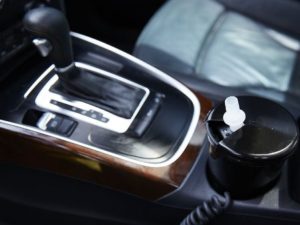Understanding the Confusing IID Requirements in KS
Every Kansas DUI suspension is now followed by some period of restriction to driving only with an ignition interlock device, or IID. While limited restricted IID driving privileges can only be obtained via application with the Division of Vehicles, approval rates for hardship IID restrictions are likely to be high given the flow of revenues that installation of each IID provides to the many hands inside the IID cookie jar.
If you get suspended for a year in Kansas, you should be eligible for what some people call a “hardship” license after some period of time.
Clarifying Hardship Restrictions v. Unrestricted IID Periods
One point of confusion stems from the counter intuitive notions of “limited IID restriction” v. “unrestricted IID periods.” In 2011, the KS legislature and powers that be augmented the DUI laws to allow drivers convicted or charged with DUI to apply for a “hardship” license. This license partially “restores” driving privileges, but only to and from work or school and other court-mandated appointments.
Under current laws, a hardship or work license “limits” the places to which the offender can drive. However, in order to get this limited work/school license, drivers must first get a state-approved ignition interlock device installed in the vehicle, and show proof of the installation to the DOV before any hardship privileges will be restored.
The restoration of these (work) limited, IID-restricted privileges can be applied for during the mandated suspension period for the type and level of DWI offense. But there are specific wait-times before you can apply for the limited work license, during which time you cannot drive at all. Generally, if you are suspended for a chemical test failure, you can get a hardship license after 45 days of being suspended. If you refused a test, you cannot get the restricted license until after 90 days of being suspended.
Now we can look at what the DOV calls “unrestricted IID periods:” Congratulations. You completed your work-restricted IID suspension, and now, you may drive to any location your heart desires…but you still have to keep the IID in your vehicle for an additional number of years.
What this boils down to is that, at a minimum, you will have nearly 2 years of driving with the IID, and many more years (up to 10) if you have prior alcohol-related convictions on your record.
In Kansas, the ignition interlock providers have made sure that they get paid. They have a very strong lobby and they convinced the legislature that expansion of ignition interlock requirements into the law would greatly benefit the driving public. They have also successfully lobbied the legislature to mandate that you visit the IID provider once every month, so that they can easily take your money.
Costs of the IID Program
The cost of the IID varies slightly from provider to provider. Generally, it costs about $75.00 to have the device installed, $75.00 per month, and $75.00 to have it uninstalled.
If you have to have it transferred from one car to another, that costs money. If you blow into it and have “alcohol” in your system, the car won’t start. After so many of these failures, you will be “locked out”, and your car won’t start until the ignition interlock provider comes out and resets the machine. That costs money.
In order to remain on the ignition interlock program, you have to take your car into the provider every month or two so that they can download all of the data from the device. If they have to recalibrate the device, that may cost you money.
If the data shows that you were unable to start the car due to alcohol in your system, the provider will report that to the Kansas Department of Revenue. This could be a problem for any probation or diversion you might be on.

How the Ignition Interlock Devices Work
If an ignition interlock device is installed on your car, you have to blow into it in order to start the car. In fact, one inconvenience is that you have to fire up the device and wait a minute and a half for it to be ready for the blow.
Then, you blow into it. If you are free of alcohol, your car should start. If you blow about a .04 or higher, it won’t start.
Then, while you are driving, the device will require periodic “rolling” tests, where you have to blow into the machine while you are driving in order to keep the car running.
Ignition interlock devices aren’t perfect. A recent article details the fact that energy drinks will often cause failures on the ignition interlock device. Other foods, beverages, medicines and mouthwash can also cause failures and lock-outs.
Again, this could cause you a problem if the machine is reporting failures for alcohol and you are on a DUI diversion or probation that is conditioned upon your not drinking any alcohol while on supervision.
So, you have to be careful and, while on the Kansas ignition interlock restriction, (limited or unlimited) you have to know that it may take you longer to get to the places you need to go in your car. Of course, the ignition interlock restriction is better than not being able to drive at all.
As all of the above strongly suggests, if you are charged with a DUI in Kansas, it is wise to thoroughly review and consider all of your legal options. Remember that there are 2 separate proceedings against your driving privileges after a DUI: 1) the criminal charges for DUI, and 2) the administrative action to suspend. You may consider fighting on both fronts.
You only have 14 days to request the administrative driver’s license hearing or else you will get suspended for sure and have the ignition interlock requirement. A good DUI lawyer should be able to advise you and request the driver’s license hearing on your behalf. It is always a good idea to request this hearing. Feel free to contact our firm if you want more information about this process.
